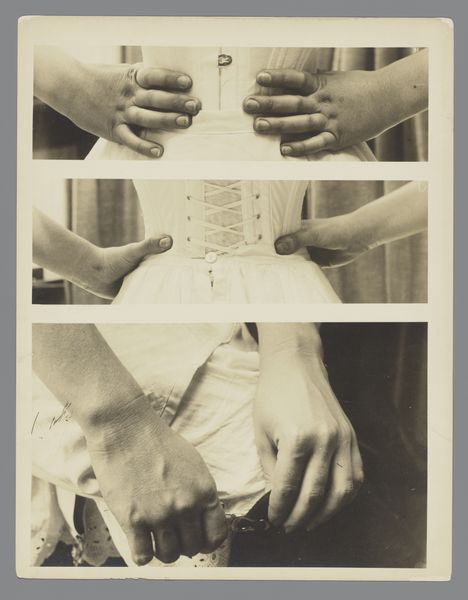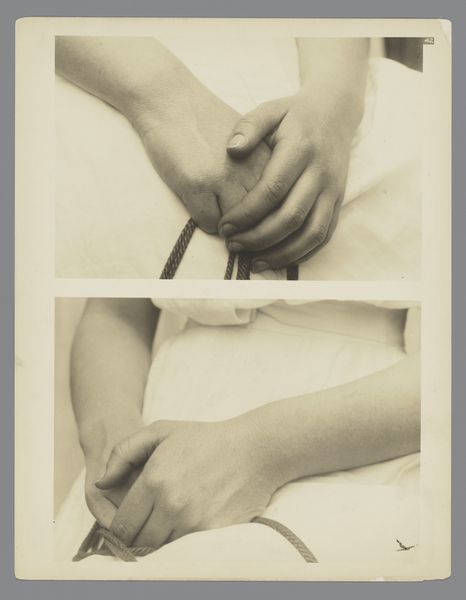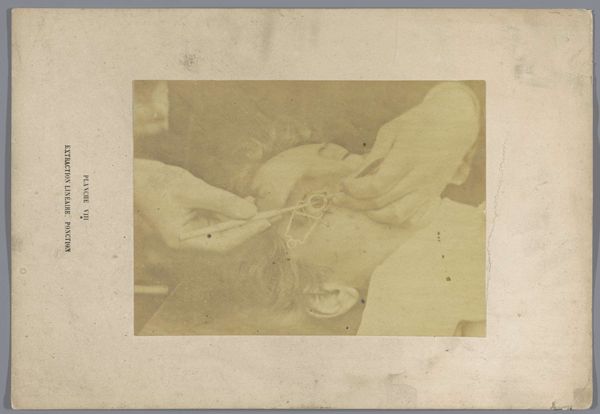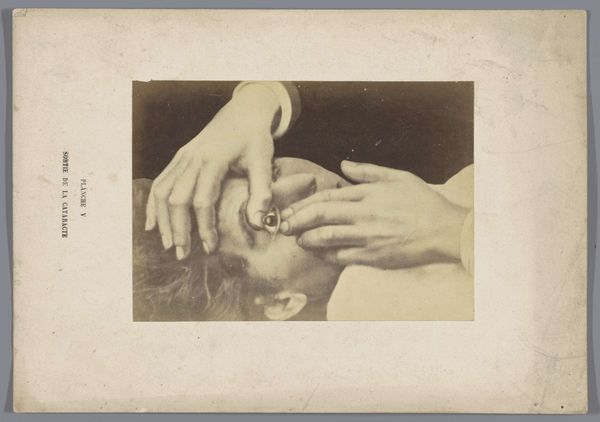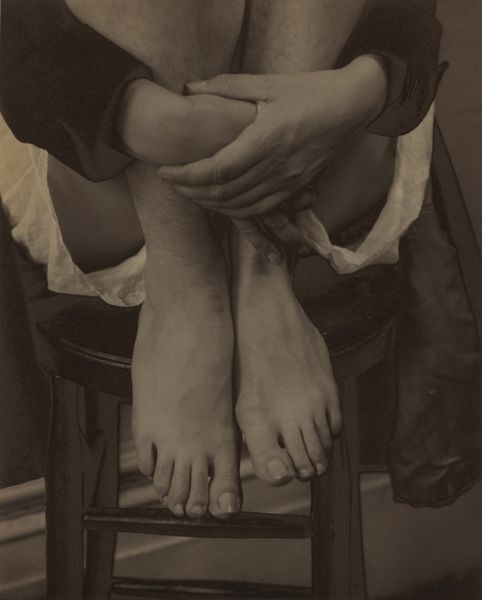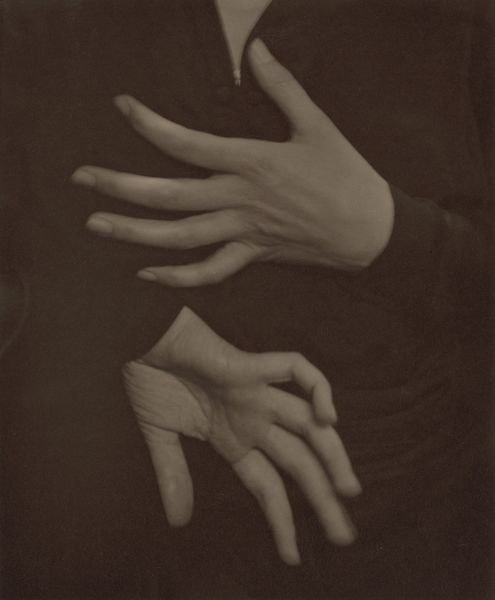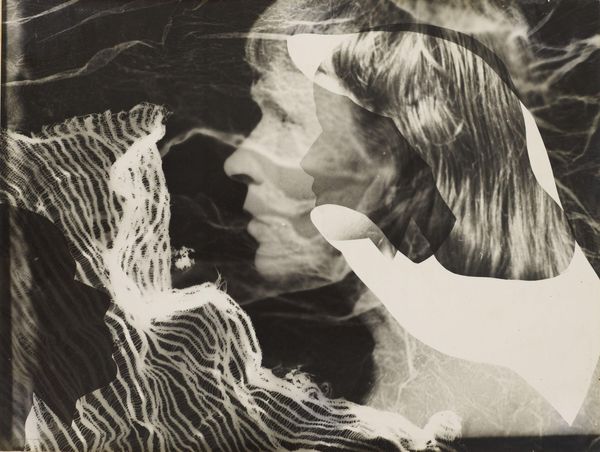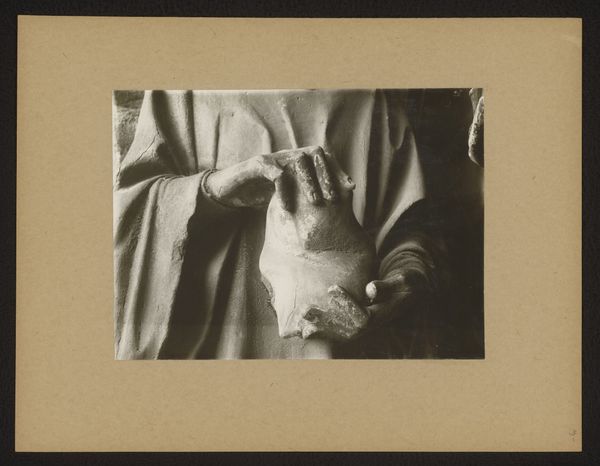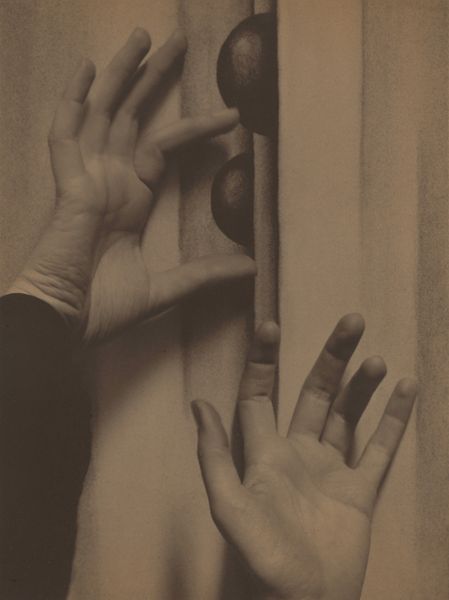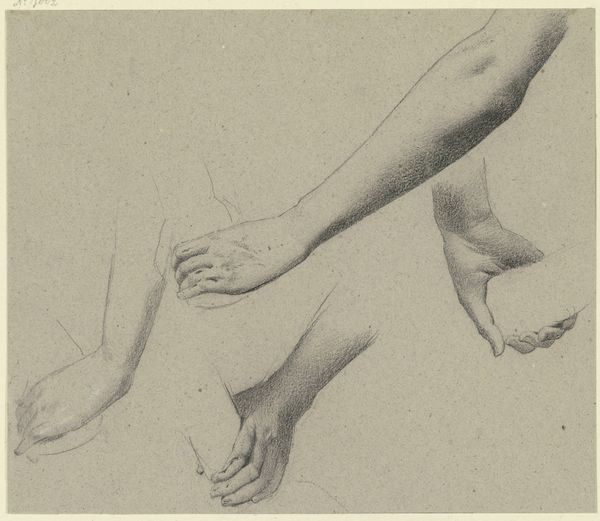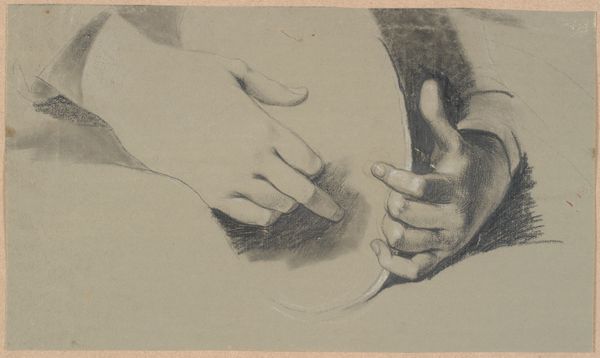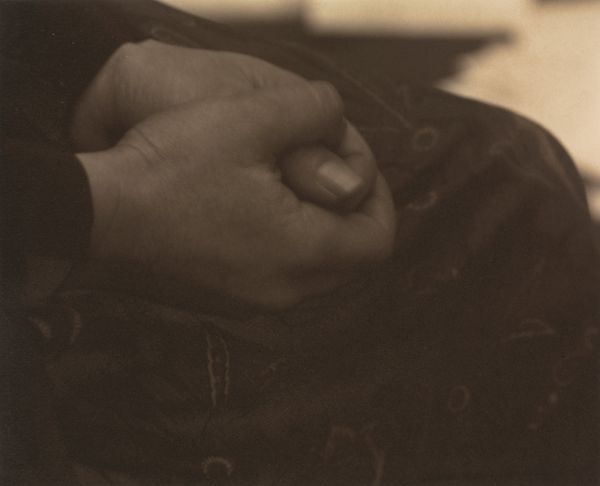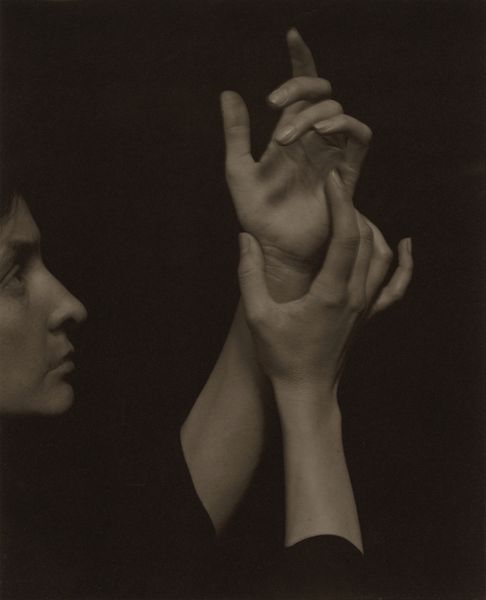
photography, glass
#
portrait
#
photography
#
glass
#
symbolism
Dimensions: height 247 mm, width 317 mm
Copyright: Rijks Museum: Open Domain
Editor: Here we have “Hands Holding Glasses,” a photograph from 1912 by an anonymous artist. It shows multiple images of arms and hands holding glassware, collaged together. There’s something unsettling about it, almost clinical. What do you see in this piece? Curator: That sense of unease is understandable. The fragmentation, the focus on the body as object – it speaks to the era’s shifting perspectives on identity, particularly for women. The early 20th century was a time of massive social upheaval, and this image seems to grapple with the changing roles of women and the ways they were being perceived, and perceiving themselves, through a lens of increasing industrialization and scientific objectification. Editor: So, it’s not just a photograph of hands? Curator: Not at all. Think about what glass represents: fragility, transparency, but also constraint. The act of holding, in a literal sense, defines so much of the artwork. And beyond that there is also holding oneself together within oppressive structures. Now, notice how the images are arranged and cropped: are the hands actively engaging, or merely displaying? Does it provoke any reflections about gender and labour? Editor: That’s interesting, I hadn’t considered the labour angle. It's as if the hands are being presented as specimens, almost detached from a complete individual. Curator: Precisely! This work uses photographic techniques to mirror society’s tendency to fragment and dissect, especially when viewing marginalized identities. Hopefully it allows you to consider the nuanced conversations regarding control, autonomy and visual objectification. Editor: This really shifts how I see the image. I now realize it shows how individual narratives intertwine and reflect cultural movements, challenging ingrained perspectives. Curator: Agreed. It is important for us to consider artworks beyond their aesthetic appearances to expose social frameworks.
Comments
No comments
Be the first to comment and join the conversation on the ultimate creative platform.
